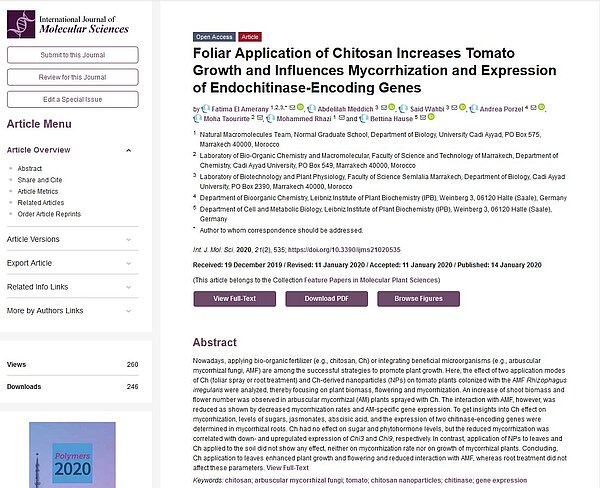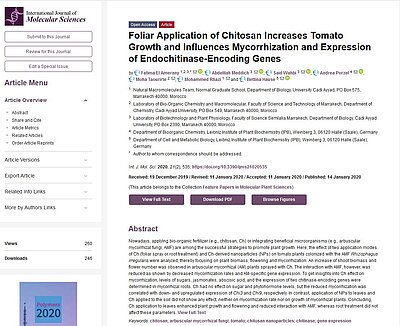Foliar application of chitosan increases tomato growth.
IPB scientists, in collaboration with partners from Morocco, have investigated the effect of two application modes (foliar spray or root treatment) of the bio-organic fertilizer Chitosan (Ch) and Ch-derived nanoparticles on tomato plants colonized with the arbuscular mycorrhiza fungi Rhizophagus irregularis. They focused on plant biomass, flowering and mycorrhization. In this study, they observed that arbuscular mycorrhizal plants sprayed with Chitosan exhibited an increase of shoot biomass and flower number. The interaction with the mycorrhiza partner, however, was reduced as shown by decreased mycorrhization rates. The reduced mycorrhization was correlated with down- and respectively upregulated expression of two class III plant chitinase-encoding genes. Regarding the symbiosis, class III plant chitinase could have an essential function in triggering the plant immune system. Thus, they suspected that the reduction of mycorrhization might be related to changes in the expression of these genes. In contrast, application of Ch-nanoparticles to leaves and Ch applied to the soil did not show any effect, neither on mycorrhization rate nor on growth of mycorrhizal plants.
Chitosan is a carbohydrate derivative from chitin. Recently, the application of such natural products as bio-organic fertilizer attracted many attention and is nowadays considered to be a very good alternative to pesticides.



